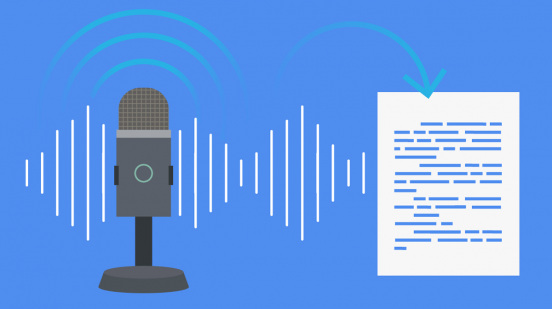Below is my voice to text paragraph. This is was fun and thought provoking activity about how technology and humans are both susceptible to error, perception, and interpretation.
“Hi everyone. Today I’m going to talk about my recent experiences with virtual interviews. This assignment requires us to talk for about five minutes so I’m gonna try to do that by sharing my interview experience with Lululemon and Microsoft for user experience design positions, so far. I started interviewing at Lululemon, Microsoft, Amazon, and HootSuite last month and the interviews are still ongoing. As you can imagine this is been a tiring experience as most of these interviews end up being about at least half an hour to an hour multiple times a week. I would say so far that the Lululemon interview experience has been the most smooth and easy, but that’s because I know the hiring manager from another connection last year, and he has been trying to get me to join their team for sometime now. So the factor of me trying to convince them to add me to their team is not A factor here which is awesome but I feel like I didn’t get all of my answers when I was in the interviews because it was assumed that I would just be a perfect fit and the interviews revolves around more of my direct skills right now in the workforce. Whereas my interview experience with Microsoft has been a lot more thorough it started off with the hiring manager giving me an overview of the company culture. Which is something that I really value, they really drove home the point that Microsoft is a philanthropic company overall and it really matters to them who’s on their team and what these players bring to their team in terms of overall goals. So it’s not just about the skills that you have it’s about making sure that you’re the right fit as well. However Microsoft interview experience has been a lot more demanding the interview experience requires about six interviews and four of those interviews are done over two consecutive days back to back and involves two presentations done by myself followed by interviewing with some key players after my presentations. So as you can imagine this is quite daunting and can make and interviewee a little nervous. But I have been very confident in my skills so far so I’m not particularly worried, it’s just that it’s such a large time investment into one company. Which makes sense because Microsoft is a huge enterprise company and they receive an influx of hundreds of applicants a day so in order for them to really parse out the interviewees Who genuinely want the position they will make the interview process a little bit harder.”
1. How does the text deviate from conventions of written English?
- Voice to text feature did not know when to “phase” naturally, without me suggesting a comma or period.
- Voice to text sometimes cannot differentiate between different uses and forms of words. For example, I said “for some time now”, but it registered “some time” as one word, “sometime”.
2. What is “wrong” in the text? What is “right”?
- It did not pick up my voice correctly the whole time. For example, at one point I said “this HAS been”, but it registered “this IS been”.
- Registered “resolves”, instead of “revolved” .
- Registered “and” instead of “an”.
Other questions to consider:
What are the most common “mistakes” in the text and why do you consider them “mistakes”? What if you had “scripted” the story? What difference might that have made?In what ways does oral storytelling differ from written storytelling?
Overall, I feel like voice to text can consist of numerous errors if it is not a scripted text because when we are actively writing or typing, we have ample time and space to think about what we will write down. For example, I took a couple seconds to think about how I was going to finish that last sentence…and now this sentence. I think we often suffer from the illusion that we know what to say at all times, but that is not always the case. We live in a world where we have more time than ever to respond; you can think about a text before you respond, you think about what you post for an eternity, we get friends opinions on how to respond, etc. When we are put in real-time scenarios, such as interviews, you do not get the same type of luxury. I still strongly encourage people to say “Let me think about that for a moment.” when they need time to ponder a question, but that time is generally under pressure for people. Voice to text is probably a more accurate depiction of how we speak in everyday life, and also an example of miscommunication. I meant for there to be multiple pauses in my sentence structure, but sometimes I forgot to say “comma” or “period”, which resulted in many run-on sentences in my text above. This exercise allows us to take a step back and reflect on perspectives. Sometimes technology (and people) do not pick up the intended meaning of our words or speech. Human error is visible in all aspects of our life, how we perceive it is what makes a difference.
Below is a video of me recording my voice to text sample above. If you watch it, you might notice the feature also stopped working multiple times and I had to re-click the icon to pick up where it left off. I assume this is a built in timing feature to avoid “butt-texts”. However, the video below is sped up at 4x to reach the upload requirements, so instead of a 5 minute video, it’s just over a minute.





